Can You Shower With A Tampon In? Your Doubts Resolved!
Don’t let doubts keep you from feeling fresh and confident! Get the facts on showering with a tampon—is it a safe practice or a risky move?
On Dec 26, 2023 – 10 minutes read
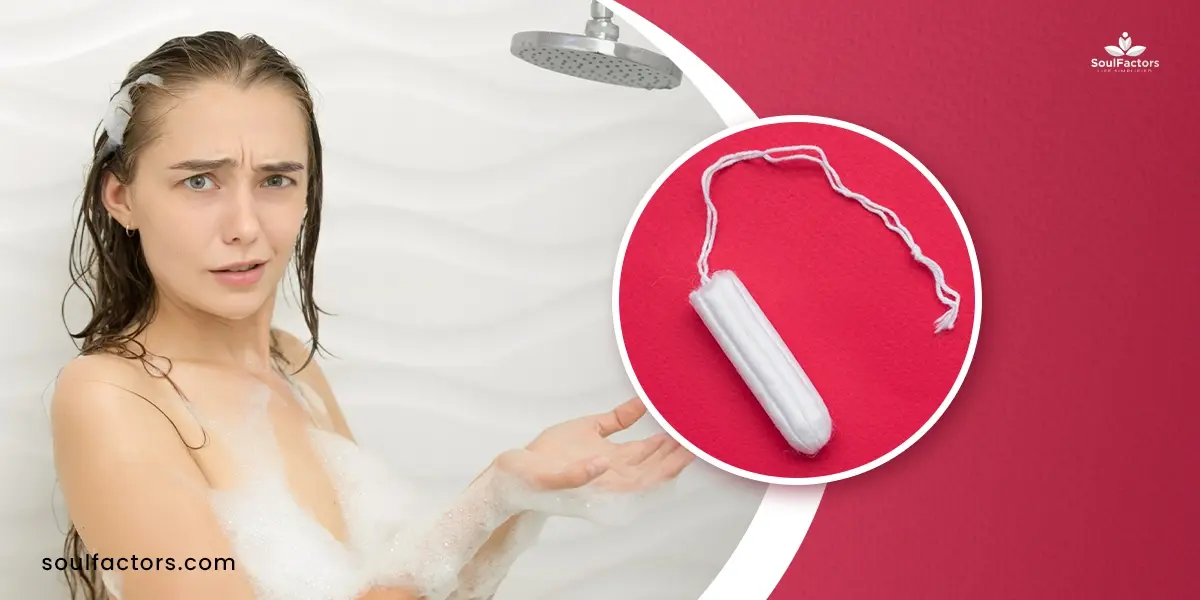
Out of the many queries girls and women have about tampon use, one of them is: Can you shower with a tampon in? To put your concerns to rest, let us tell you that you can shower while wearing a tampon. Many women have been doing that without a problem.
However, there are a few things you must bear in mind regarding this practice to maintain your menstrual health and hygiene. We will discuss more about this in the sections given below. So, keep reading!
Showering With A Tampon – Yes or No?
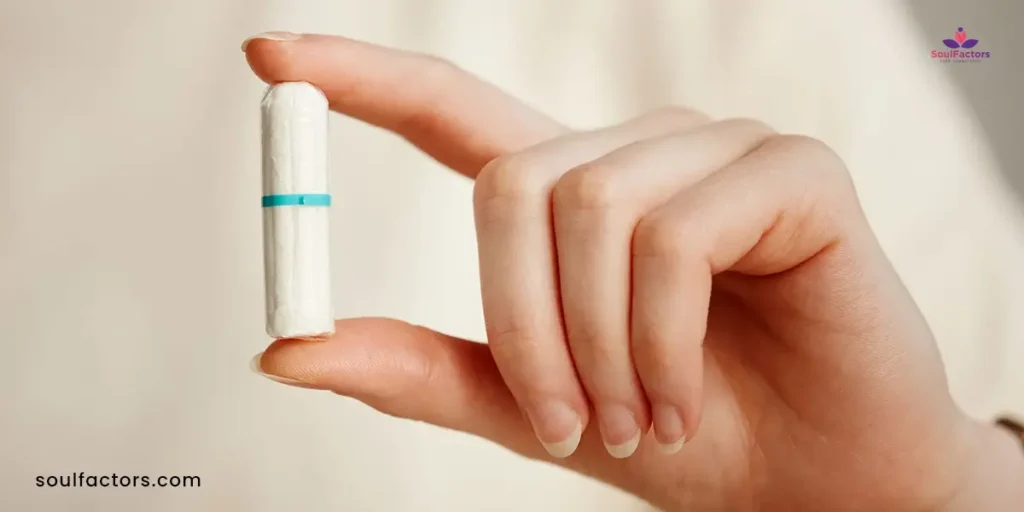

QUICK ANSWER –Can You Shower With A Tampon In?
Absolutely! There is no harm in taking a shower with a tampon in. If you don’t like the icky feeling of blood trickling down your legs while you’re trying to freshen up, you can keep wearing your tampon. It will continue to do its job and absorb the blood as it normally does when you’re not in the shower.
It is common for first-time users to make tampon mistakes while insertion, leaving them uncomfortable while the tampon is inside. Here are the correct steps on how to insert a tampon(1).
How To Insert A Tampon
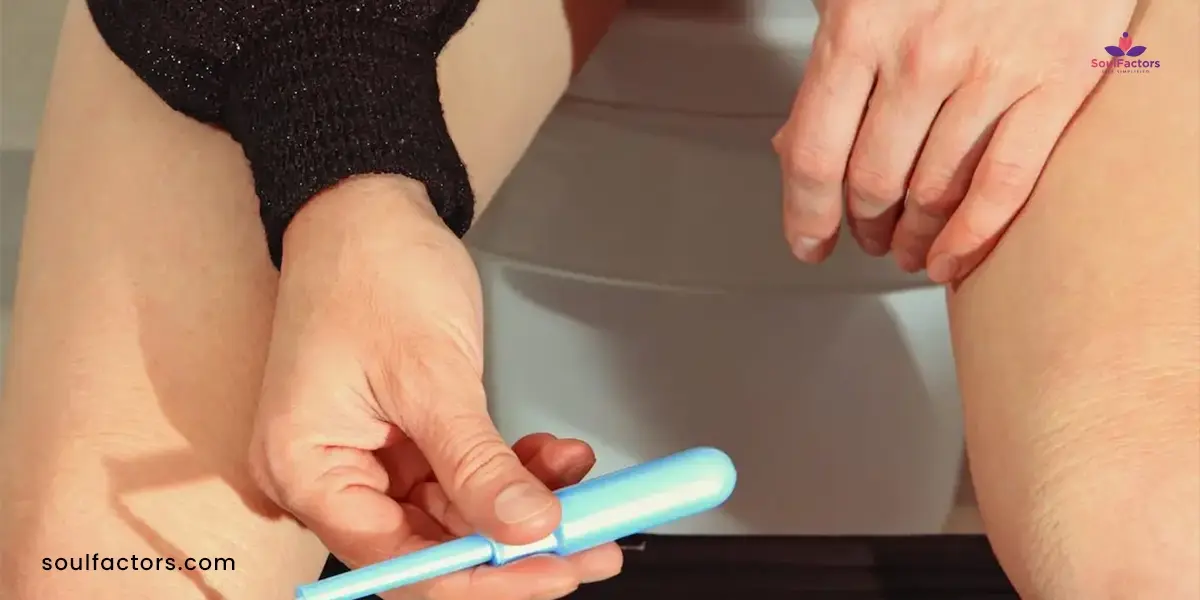
Step 1: Wash your hands and take out the tampon from its packaging.
Step 2: Get into a comfortable position. You can keep one leg on a closed toilet seat, spread your legs and bend your knees, or sit on the toilet if that’s what you’re comfortable with.
Step 3: If you’re using a tampon with an applicator, hold it in your dominant hand with your thumb and middle finger. Insert the tampon into your vagina and gently push the applicator tube with your index finger. This will slide the tampon into your vagina in the right spot.
If you feel uncomfortable, it means your tampon is not in the correct position. Use your finger to push it further inside until you don’t feel the tampon at all.
If you’re using a tampon without an applicator, spread the tampon’s end by pulling the string on all sides. Now, hold it with your middle finger and thumb, and place your index finger on the end with the string. Push it gently up your vagina and pull out your index finger. Adjust its position if required.
Step 4: And it’s done! You can now wash your hands and carry on with your day as usual.
This is especially good for days when your period is heavy. On days when you have a light period, you probably won’t need to keep wearing one, as you might just not bleed during the few minutes you’re in the shower.
In the end, it all depends on your personal preference. Many women are comfortable taking a shower without a tampon. If anything at all comes out, the period blood gets washed out just the way your pee does when you do it in the shower. But if you prefer the other way around, you can keep wearing the tampon and change it with a new one after your shower.
Tips For Showering With A Tampon
Here are the tips to make your showering experience with a tampon relaxing and refreshing. So, here we go:
- Make sure your tampon is securely placed in your vagina before you step into the shower.
- Enjoy a lukewarm shower instead of a hot one. Besides increasing your chances of getting a burn, hot water might create integrity issues for the tampon.
- Gently wash your pubic area with a mild, unscented soap. Make sure you don’t accidentally pull the tampon string and dislodge it from its position.
- Rinse yourself from front to back to keep infections at bay.
- Avoid spraying water straight onto your vagina with your detachable showerhead. Your tampon will likely absorb more water this way.
- Take short showers to keep too much water from getting absorbed in your tampon.
- Pat dry gently after the shower and avoid tugging and pulling the hanging tampon string.
Maintaining Hygiene And Safety
In case you are wondering, ‘Do I have to change my tampon after I shower?’ Then yes. It is recommended to change your tampon into a new one after you’re done with your shower. This will help maintain hygiene and keep you safe from potential tampon-related problems.
Your tampon will most likely absorb some amount of water while you’re in the shower, altering its absorption capacity. Having a water-soaked tampon in your vagina is not a good idea, as it won’t absorb period blood as effectively as it should.
So, using a new tampon is better than continuing to wear the old one.
How Do You Know When The Tampon Is Full?
There are two ways to know if your tampon is full and needs a change. First, you will notice blood leaking out of the tampon string and staining your panty. An oversaturated tampon often starts leaking and indicates you should head to the bathroom to wear a new one.
The second way is meant for times when you don’t see leaking blood but want to know how saturated your tampon is. Give a gentle tug to the string and see if the tampon begins to come out. A fully saturated tampon will slide down easily, whereas a partially saturated tampon will remain in place and require a stronger pull.
Can You Wear A Tampon To Bed?

Wearing a tampon is not a problem unless you are someone who sleeps for more than eight hours at a stretch.
As tampons are supposed to be changed every 4–8 hours, sleeping longer than eight hours will keep the tampon inside your body for longer than the recommended time, making you prone to getting toxic shock syndrome. Although rare, toxic shock syndrome is a potentially fatal condition that requires immediate medical attention.
So, if you’re a late riser, your best bet is to wear a pad, a period panty, or a menstrual cup so you can bypass this risk of infection and get the rest you need.
Can You Wear A Tampon With An IUD?
There is no reason why you cannot wear a tampon when you have an IUD placed in your body. So, feel free to use tampons.
Tampons and IUDs are placed in different areas of the body. Tampons stay in the vagina, whereas IUDs are placed in the uterus. Both remain disconnected from each other.
Therefore, wearing a tampon won’t disturb the inserted device in any way. Still, if you have doubts, talk to your provider and get your concerns answered.
Can I Poop With A Tampon In?
Though some of you might find it gross, it is actually okay to poop with a tampon in. You just need to ensure that the tampon string stays out of the way of the poop and doesn’t get soiled with it. Similarly, many individuals wonder, ‘Can I pee with a tampon in?’ The answer is yes, it’s completely fine to urinate while wearing a tampon. Keep in mind that straining too hard might cause the tampon to slip out.
It’s common sense—wearing a tampon with a poop-filled string is bad for hygiene purposes. You might even develop bacterial vaginosis(2), an infection due to the presence of too much bad bacteria in the vagina.
So, in case your tampon string gets soiled when you’re doing your deed, don’t forget to replace it with a new one!
Would My Partner Feel A Lost Tampon?
Well, this depends on how far your tampon has gone up the vaginal canal. If it’s too inside, your partner might not feel it, but if it is closer to the opening, he might feel an obstruction.
Having a lost tampon inside your body is not good for your overall health. So, you must get it removed by a healthcare professional as soon as possible, and only then indulge in sex with your partner.
What Do Swimmers Wear During Periods?
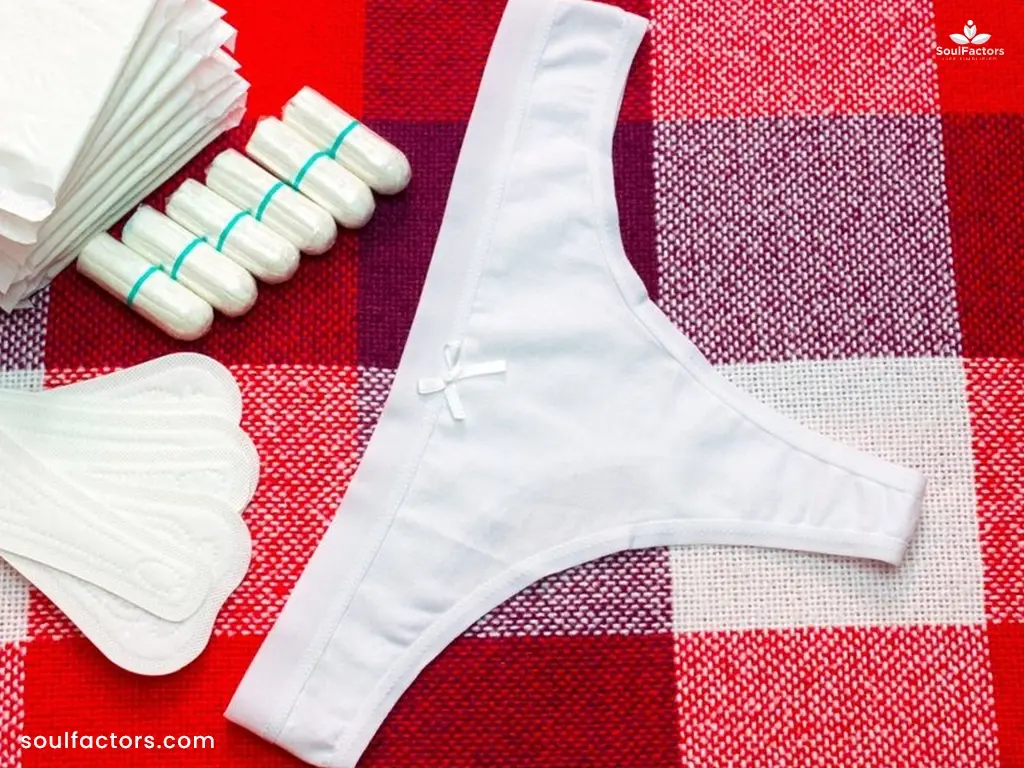
In addition to “Can you shower with a tampon in?” there’s another common question that worries many women. It is whether they can go for a swim during their period days. Luckily, there are quite a few products that swimmers can use to contain period blood while they are enjoying a swim or competing in a swimming tournament.
One of them is a tampon. A tampon is made of absorbable material and is capable of soaking up blood before it leaks out of the vagina. Therefore, there’s no need to worry about leakage or contamination of the pool water.
Besides tampons, there are other alternatives you can consider to enjoy a worry-free swim.
Alternatives To Consider
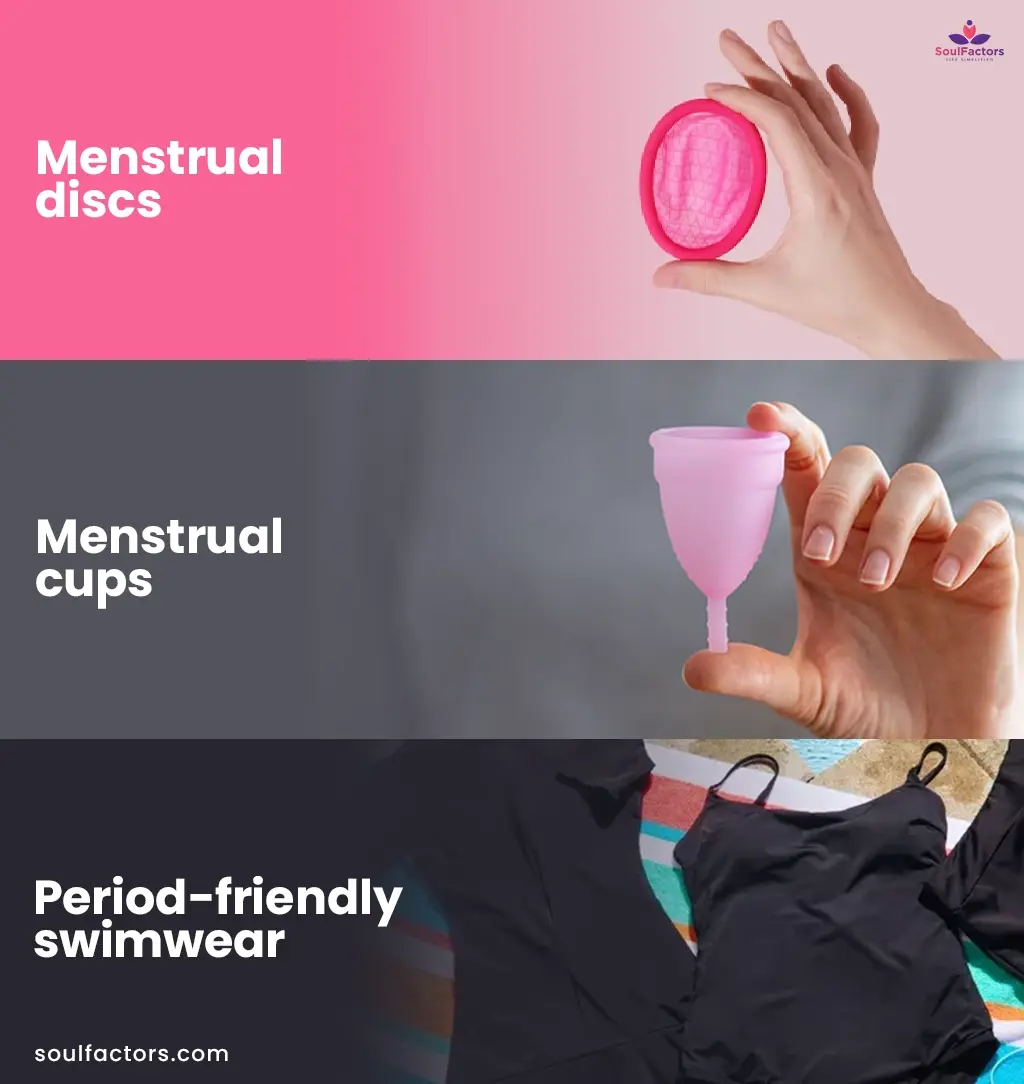
Menstrual discs
These are disc-shaped products that you can insert deep into your vagina to collect period blood. It is positioned at the point where the vaginal canal and cervix meet. Menstrual discs can be used for up to 12 hours straight, which is great for long swim sessions. After all, no one likes to rush to the toilet time and again for a change.
Menstrual cups
These are reusable and cost-effective options to maintain menstrual hygiene. Usually made of rubber or silicone material, a menstrual cup is placed in the vagina during periods. It collects blood, just like menstrual discs, and must be emptied and washed before the next use.
Period-friendly swimwear
These are also reusable period products that might seem expensive at first but are economical in the long run. It contains multiple linings of absorbable fabric that soak up blood and keep it trapped. However, it is better to reserve them for low-flow days and stick to cups and tampons for days when your period is heavy.
FAQs
Yes, it is completely fine to leave your tampon in while peeing.
You can only lose your virginity if you have sex. Inserting a tampon into the vagina may stretch or tear your hymen (though this is uncommon), but it cannot make you lose your virginity.
Sure, you can! You might notice slight bleeding while you’re in the shower without a tampon, but it will get washed off with the running water and go down the drain.
It is better to change your tampon after a shower, as it might absorb some of the water, lowering its blood absorption capacity.
You can sleep in a tampon, but make sure you wake up for a change if you plan to sleep for more than eight hours. Tampons can lead to toxic shock syndrome if left in the body for more than eight hours and, hence, must be changed every four to eight hours.
Multiple tampon sizes are available on the market. Depending on the size you’re using and your blood flow, you can expect to use around 3–6 tampons per day.
A menstrual cup would be better if you want to go swimming. Tampons tend to absorb pool water and can increase your risk of vaginal infections.
Eight hours. Leaving a tampon any longer can lead to toxic shock syndrome and raise the chances of vaginal irritation and infection.
Tampons have nothing to do with period cramps. Cramps are a result of uterine contractions, and these are not affected by how full your tampon is with period blood.
Tampons do not dissolve in water like toilet paper and can easily clog the pipes. So, always throw used tampons in the waste bin and never in the toilet.
In Conclusion
Taking a shower with a tampon is definitely possible. It will keep the blood from leaking and allow you to enjoy a relaxing bath. The only thing to keep in mind is to replace the tampon soon after so that you don’t have a water-laden tampon inside you.
A fresh, clean tampon will work way better at absorbing period blood. So, if leaking blood in the shower makes you feel gross or you simply don’t feel like removing your tampon before a shower, just go ahead without any hesitation and change it later. It’s as simple as that!

Subscribe to Newsletter
Elevate your routine, stay on trend, and embrace a personalized beauty journey with our curated insights.




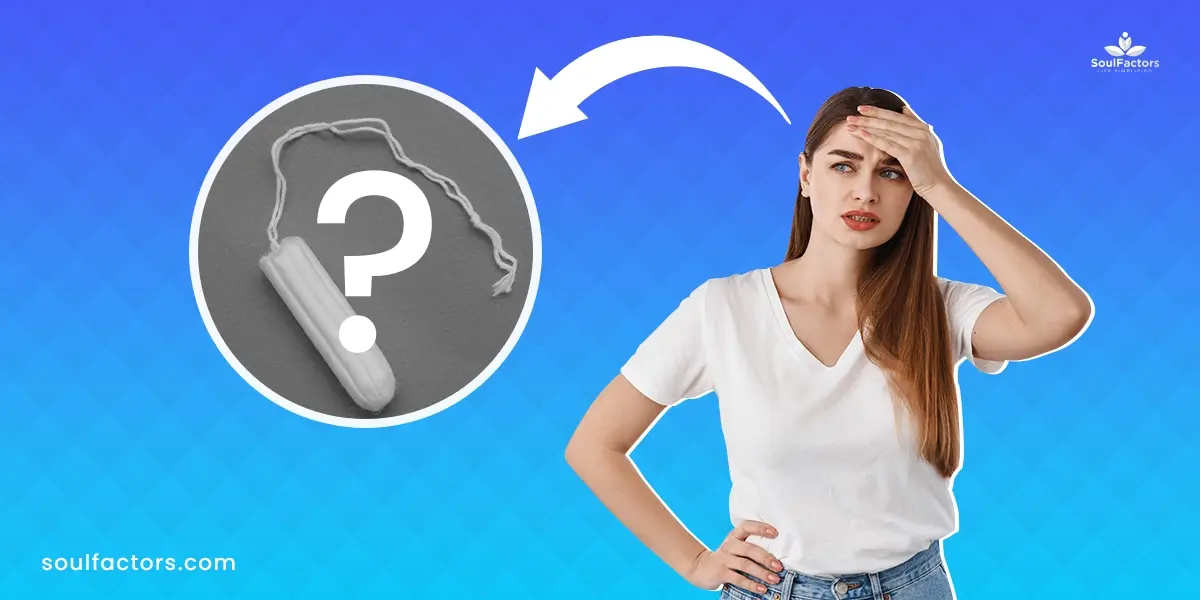
Write a Comment